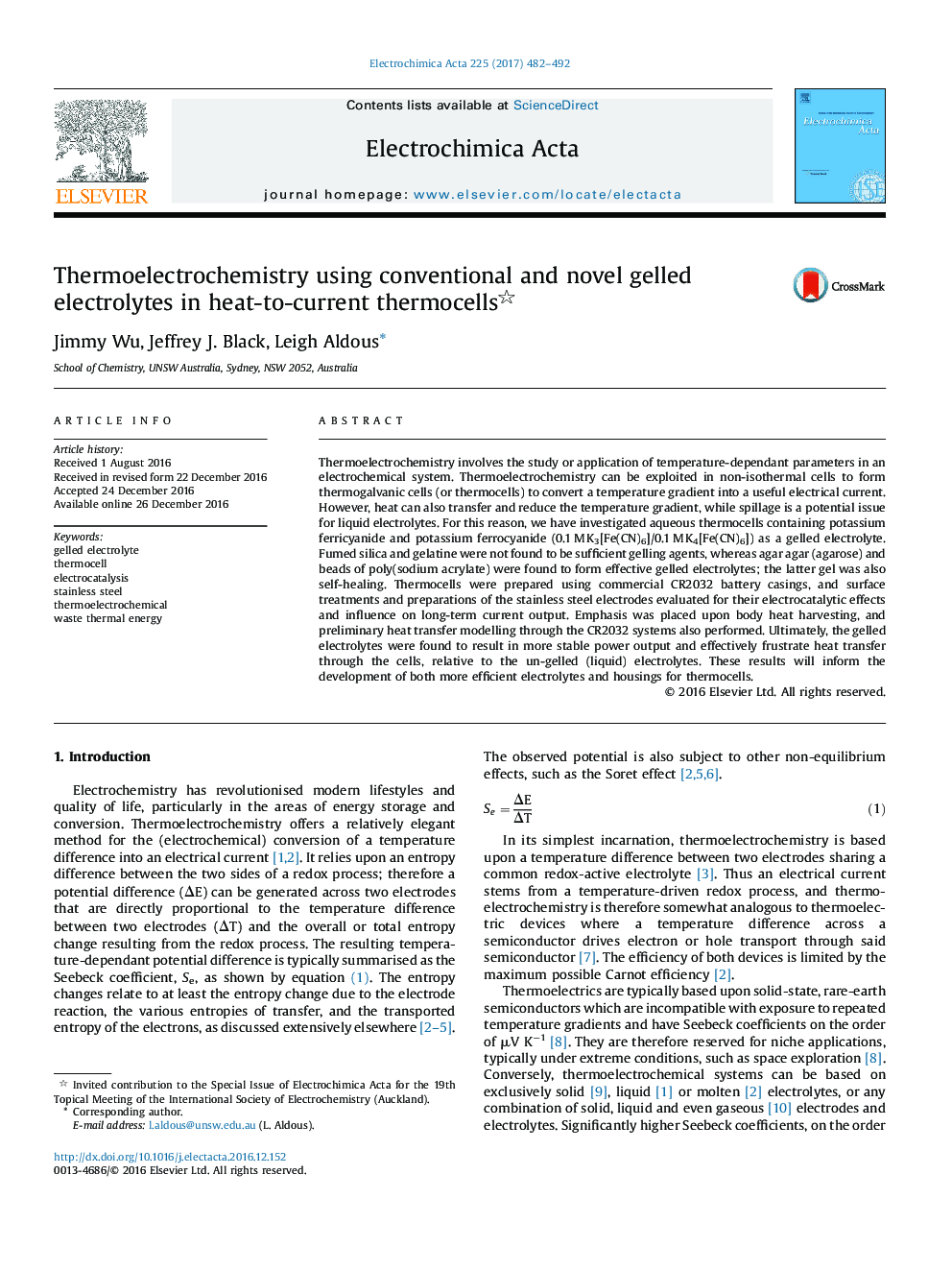| Article ID | Journal | Published Year | Pages | File Type |
|---|---|---|---|---|
| 4767392 | Electrochimica Acta | 2017 | 11 Pages |
Abstract
Thermoelectrochemistry involves the study or application of temperature-dependant parameters in an electrochemical system. Thermoelectrochemistry can be exploited in non-isothermal cells to form thermogalvanic cells (or thermocells) to convert a temperature gradient into a useful electrical current. However, heat can also transfer and reduce the temperature gradient, while spillage is a potential issue for liquid electrolytes. For this reason, we have investigated aqueous thermocells containing potassium ferricyanide and potassium ferrocyanide (0.1Â MÂ K3[Fe(CN)6]/0.1Â MÂ K4[Fe(CN)6]) as a gelled electrolyte. Fumed silica and gelatine were not found to be sufficient gelling agents, whereas agar agar (agarose) and beads of poly(sodium acrylate) were found to form effective gelled electrolytes; the latter gel was also self-healing. Thermocells were prepared using commercial CR2032 battery casings, and surface treatments and preparations of the stainless steel electrodes evaluated for their electrocatalytic effects and influence on long-term current output. Emphasis was placed upon body heat harvesting, and preliminary heat transfer modelling through the CR2032 systems also performed. Ultimately, the gelled electrolytes were found to result in more stable power output and effectively frustrate heat transfer through the cells, relative to the un-gelled (liquid) electrolytes. These results will inform the development of both more efficient electrolytes and housings for thermocells.
Related Topics
Physical Sciences and Engineering
Chemical Engineering
Chemical Engineering (General)
Authors
Jimmy Wu, Jeffrey J. Black, Leigh Aldous,
